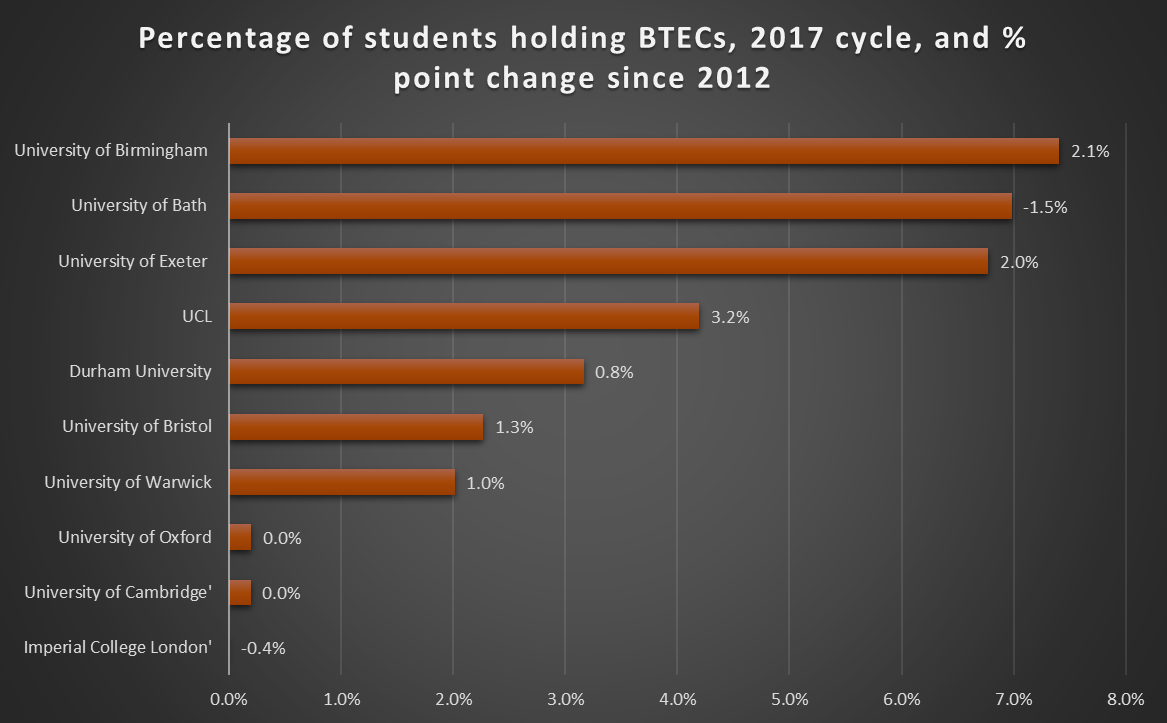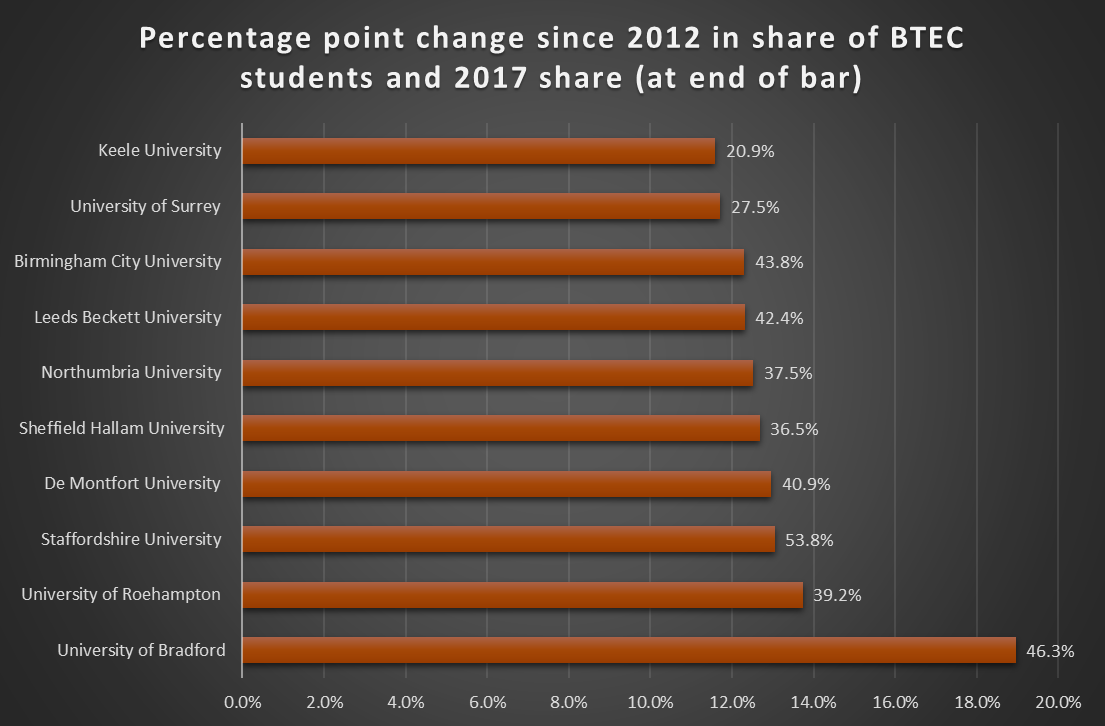Ever since the lifting of controls on undergraduate numbers in England, the annual Ucas statistics on student recruitment at UK universities have been pored over for evidence of who is winning and losing from the policy.
And since 2016, it has become apparent that enrolments – at least in terms of 18-year-olds – have been falling at a clutch of institutions, many of them post-92s.
This has led to speculation that older pre-92 universities are expanding at the expense of their younger cousins and has raised questions about the sustainability of some modern institutions.
But is this a fair assessment of the recruitment picture that has been unfolding in recent years?
One reason to reject this narrative is to point to the clear evidence that post-92 universities have been among those seeing the biggest rises in recruitment over the past few years.
Out of universities accepting at least 1,000 18-year-olds in the most recent Ucas cycle, 16 have seen numbers rise by more than 50 per cent since 2010 and almost a third of these were post-92s.
Second, some institutions where 18-year-old numbers have been dropping most sharply have pointed to a deliberate strategy to move away from targeting this demographic.
In a letter to Times Higher Education last week, Bill Rammell, the vice-chancellor of the University of Bedfordshire, where school-leaver recruitment is down by 61 per cent compared with 2010, says that the institution has “expanded routes” into higher education to encourage non-traditional students to apply.
So do the Ucas statistics reflect this approach at some universities?
One way to investigate this is by delving into the data on mature students where, although overall numbers have been falling, differing patterns do occur among institutions.
For instance, although Bedfordshire’s cohort of 18-year-olds (including from outside the UK) was 57 per cent smaller in 2017 compared with 2012, it accepted 58 per cent more students aged 21 or over. In fact, last year it recruited almost 900 more older students than 18-year-olds.
Looking at the 10 English universities where school-leaver recruitment has fallen the most since 2012 shows that there is a similar pattern at some other institutions but, importantly, not all of them. It suggests that some may have been better than others at shifting focus.

Meanwhile, another recruitment trend in recent years that has often been highlighted is the rise in the number of universities accepting students holding the more vocationally oriented BTEC qualifications rather than A levels.
A report by the Social Market Foundation recently used 2016 Ucas statistics to suggest that some of the most selective universities might not be doing enough to support those applying with such qualifications.
Do the latest Ucas data back this up, and is it just post-92s that primarily accept students with such qualifications?
Analysing the statistics by the proportion of students accepted with at least one BTEC does show that the 10 English universities with the lowest share of such students were all Russell Group universities.

A few of these universities – including UCL and the University of Exeter – have increased their share of places given to BTEC students in the past five years. However, these increases are generally lower than those seen across the sector.
This point is further backed up by looking at the 10 institutions with the biggest percentage point rises in the share of BTEC students accepted, which is dominated by less selective universities.

However, at the same time they are not necessarily the least selective universities and also do include pre-92 institutions such as the University of Bradford, the University of Surrey and Keele University.
Find out more about THE DataPoints
THE DataPoints is designed with the forward-looking and growth-minded institution in view
POSTSCRIPT:
Print headline: Recruitment focus shifting at some UK institutions
Register to continue
Why register?
- Registration is free and only takes a moment
- Once registered, you can read 3 articles a month
- Sign up for our newsletter
Subscribe
Or subscribe for unlimited access to:
- Unlimited access to news, views, insights & reviews
- Digital editions
- Digital access to THE’s university and college rankings analysis
Already registered or a current subscriber?




